Is this plant causing your allergies? If you’ve ever blamed goldenrod, it might actually be ragweed — and they look nothing alike once you know what to look for. Here’s how to tell the difference with real photos and simple identification tips.
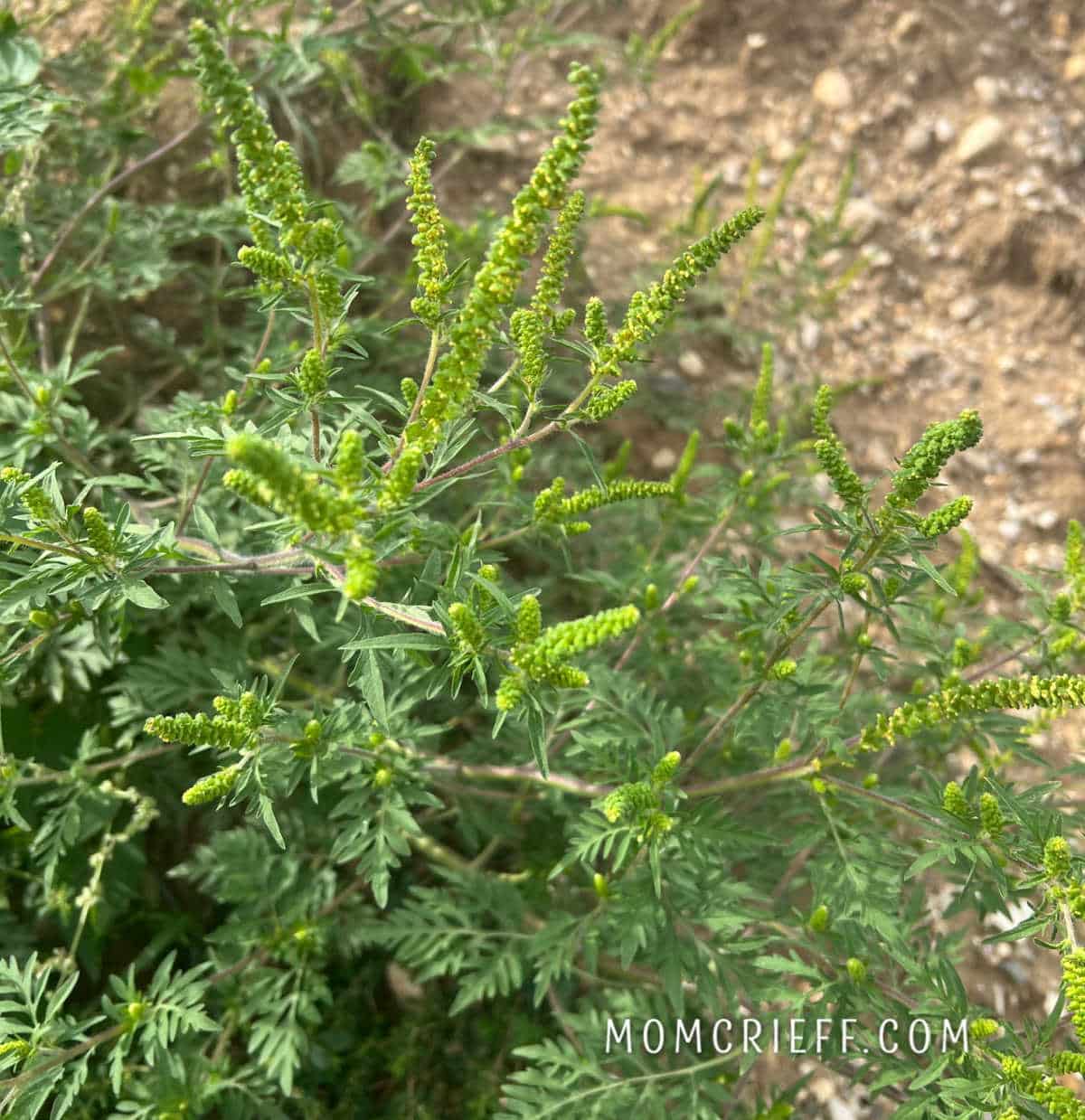
This plant is a good reason to keep your weeding in your garden under control! I've seen common ragweed happily growing in gardens (it's been in mine, too)! If you want a chemical-free way to control weeds, try this Cardboard Weed Barrier method! It works!
Table of contents
How to recognize ragweed
Ragweed is a very nondescript plant. Initially, when I tried to find out what it looked like, I asked at my local plant nursery and even a landscaper. No one knew. My research began. Once I knew what ragweed looked like, I saw it everywhere!
The above is common ragweed, and it does grow everywhere. I see it in the cracks of sidewalks, and it even is one of the first plants to grow in abandoned parking lots.
Ragweed Identification Checklist:
- Green, spiky flowers (not yellow)
- Fern-like leaves (deeply lobed)
- Grows in disturbed soil, roadsides, cracks, construction areas
- Blooms late summer through fall
- Often confused with goldenrod, which has bright yellow flowers
Watch this Ragweed Video
Below is a close-up image of a leaf. They are very distinct and look similar to a fern-type leaf.
Different types of Ragweed near Me (zone 5)
Common Ragweed
Common ragweed (Ambrosia artemisiifolia) does not have yellow flowers like the goldenrod plant does. Unfortunately, goldenrod blooms at the same time, and that's why it gets blamed for the hay fever and allergy symptoms caused by pollen allergies to ragweed. Ragweed flowers are very nondescript and are actually green, spiky-looking flowers.
Many people have a ragweed allergy; ragweed pollen is everywhere in the fall. I have found many people don't know what common ragweed looks like, and I've even seen it growing in people's yards. The first few ragweed images I'm sharing are the ambrosia artemisiifolia which is the common ragweed.
Pictures of common ragweed.
The spikey parts of the plant below are the flowers. It is green, and the pollen is yellow. Each plant can potentially produce a billion pollen grains.

Common ragweed (Ambrosia artemisiifolia) grows in most of the U.S. and Canada. It thrives in neglected spaces — like cracks in sidewalks, parking lots, gardens, and areas with disturbed soil.
Its green, spiky flowers often go unnoticed, but each plant can release over a billion pollen grains. If you suffer from allergies in August or September, this plant is likely to blame.
Take a close look at what the leaves look like. Between the flower and the leaves, that is how to tell what this plant is easily.
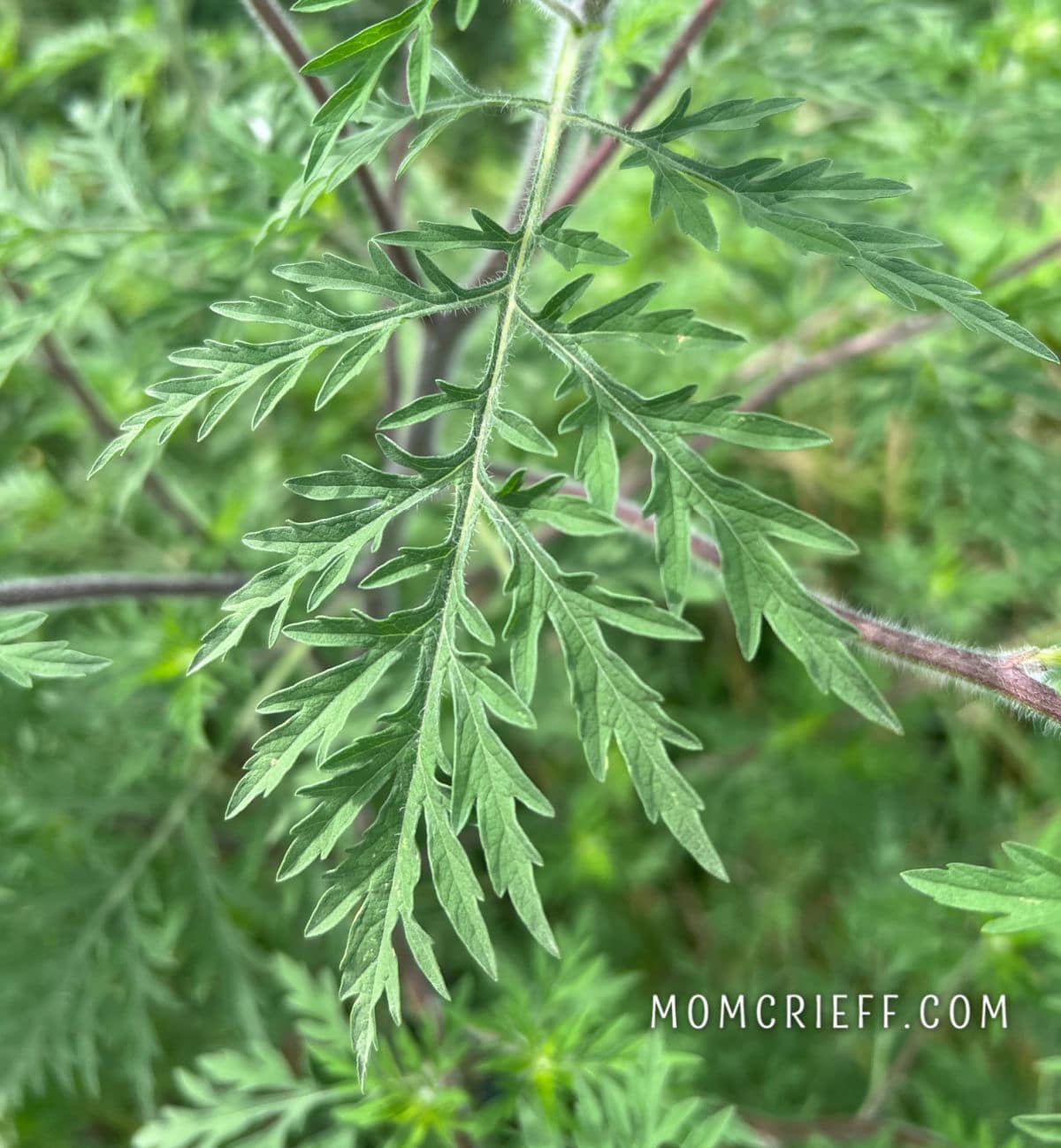
Giant Ragweed
This is giant ragweed (Ambrosia tridida). Once I saw it, I immediately recognized how similar the ragweed flower is. That green spikey thing is also the flower for this plant. And this is as pretty as this flower gets!
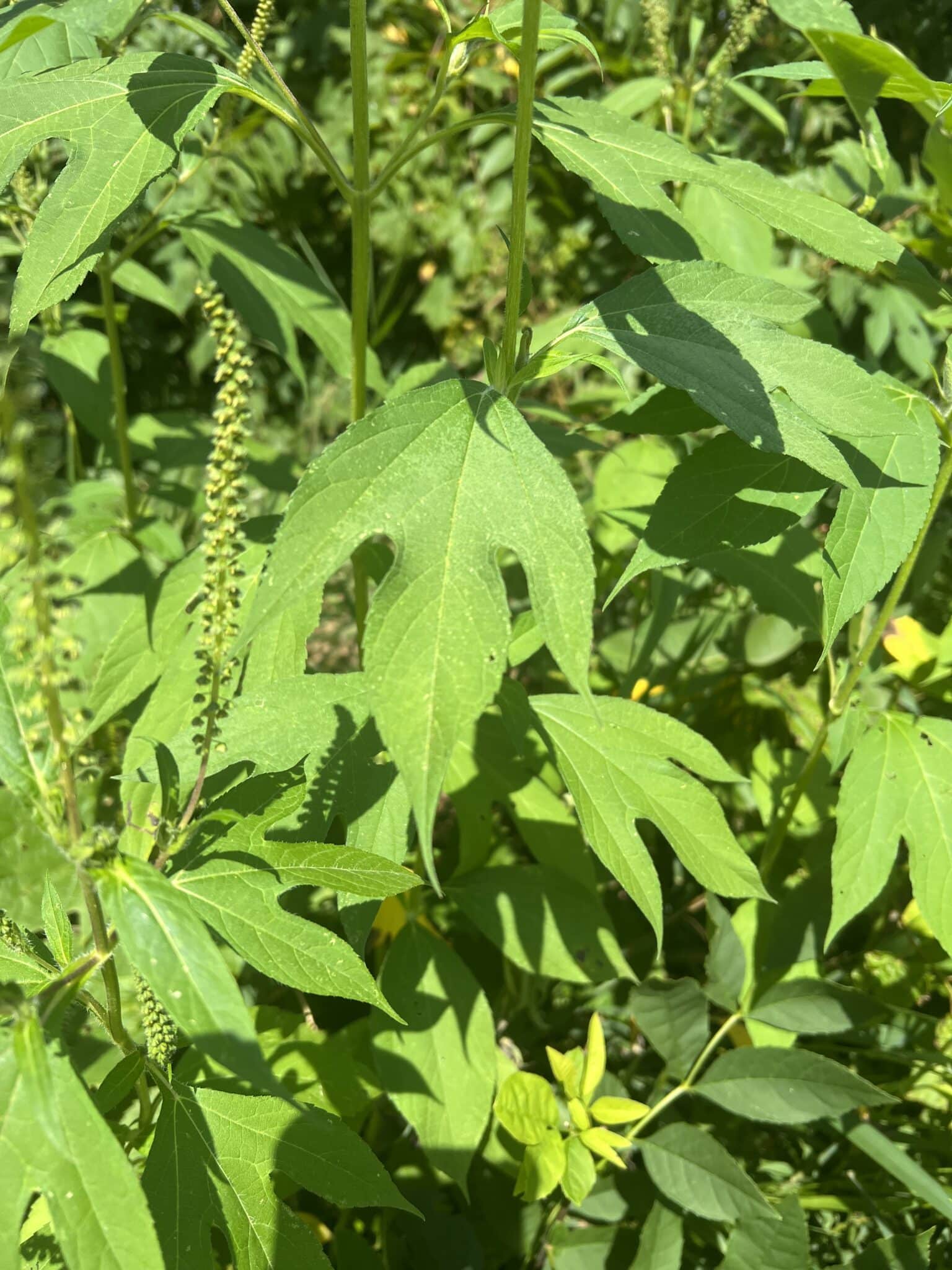
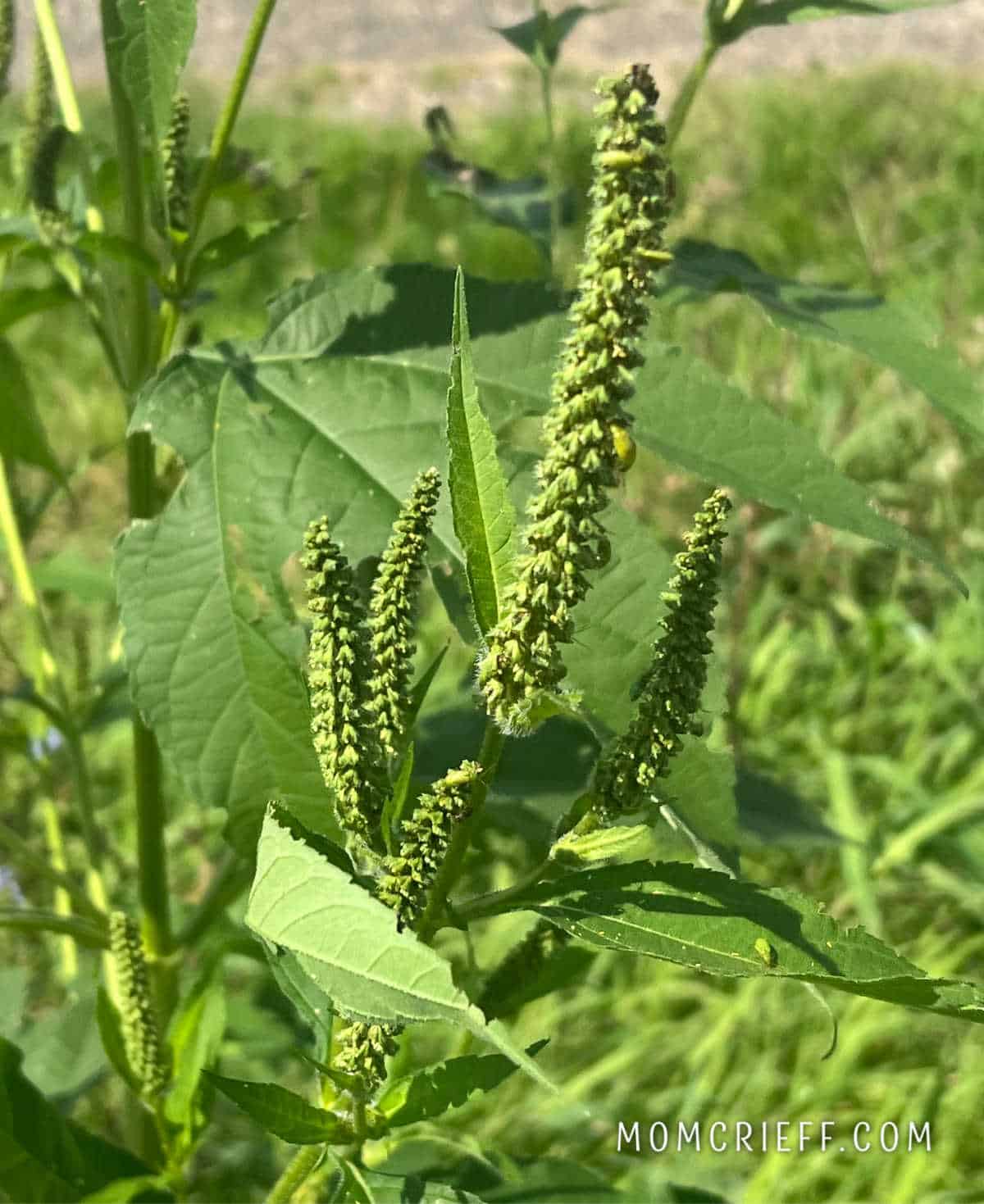
Below, do you see how they grow at the side of the road? So many people are allergic and often walk just a few feet away from a large plant!
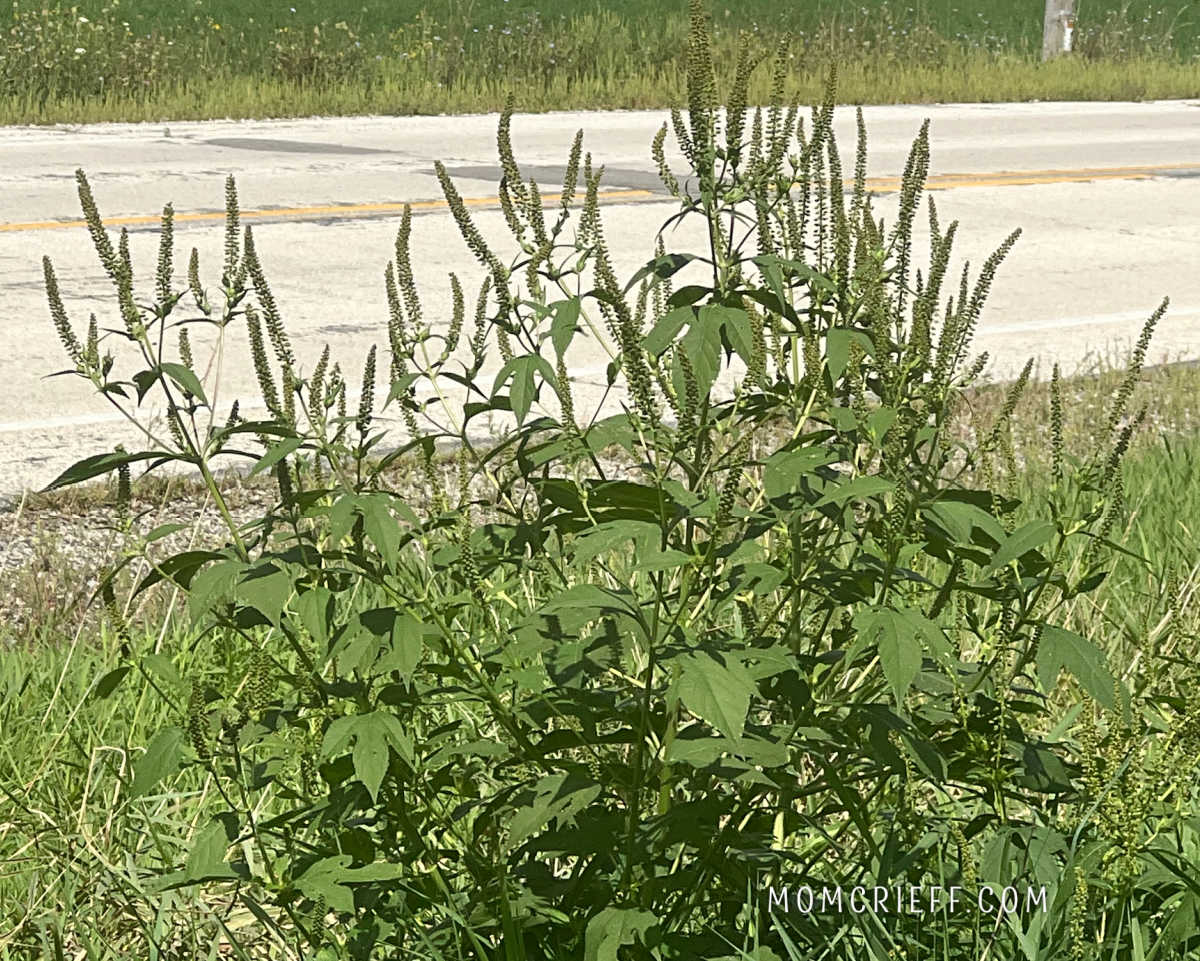
The picture below is a closeup of that giant ragweed leaf. Look at the very distinct shape. I've circled one so you can get a good look at it.
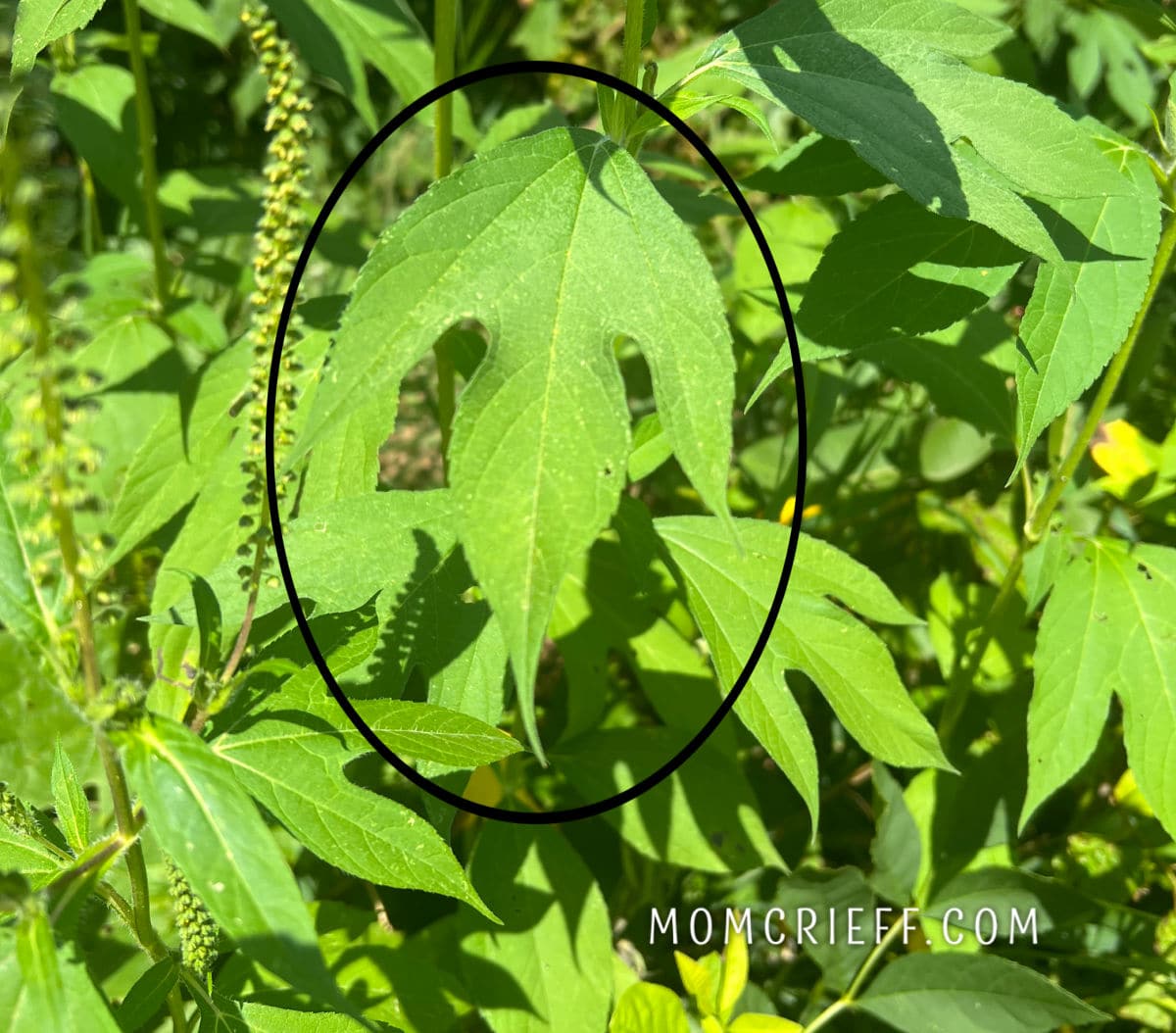
It should be noted that not all leaves have that shape. In this top-down picture, you can see that some of the smaller leaves, especially around the flower, don't have that defining shape.
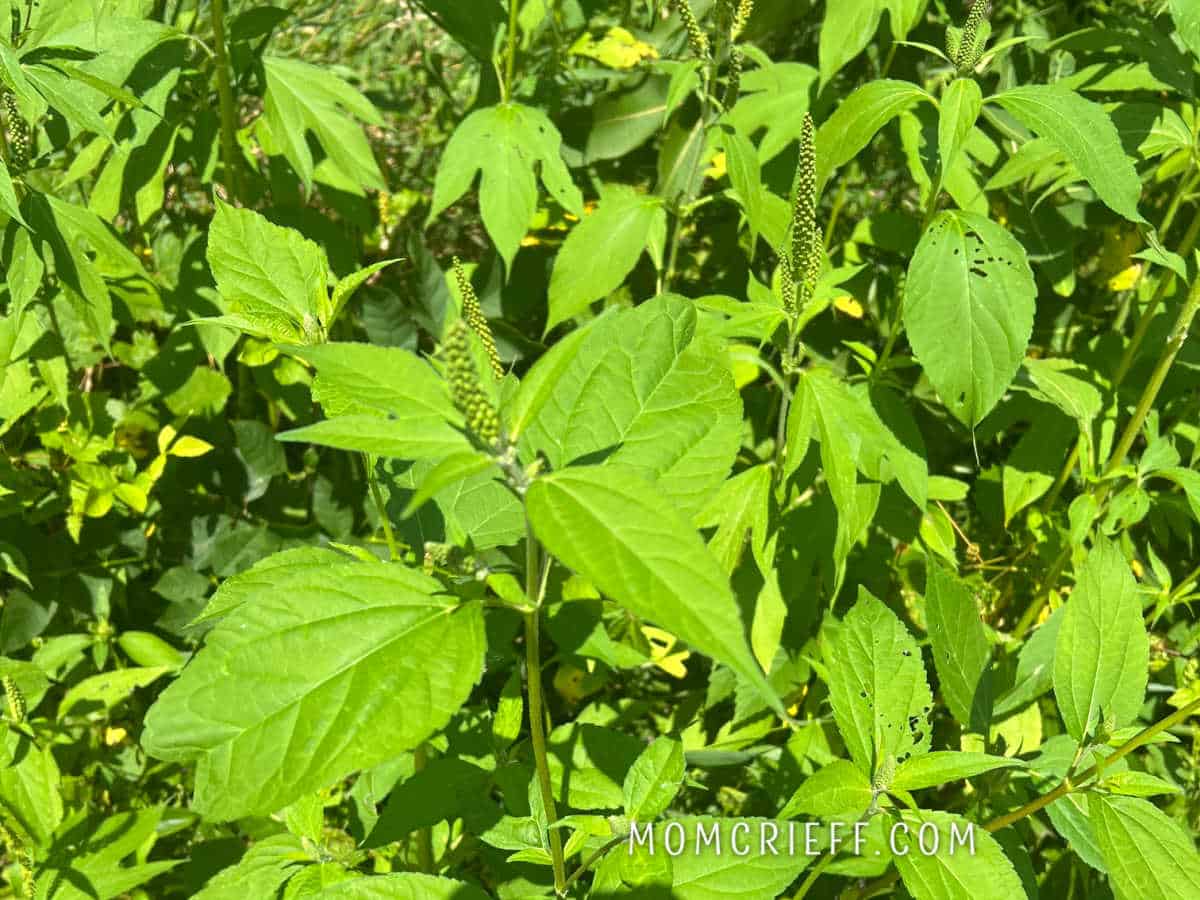
Goldenrod vs Ragweed
Goldenrod is the plant that gets mistaken for ragweed because it flowers at the same time. Many people overlook ragweed, but they see goldenrod when their allergies flare.
What Goldenrod looks like (side by side image)
A side-by-side image showing goldenrod blooming and ragweed blooming explains it best. Goldenrod is to the left, and ragweed is to the right. Poor goldenrod gets mistaken for ragweed because it flowers at the same time. The flower of the goldenrod is much more visible because it is a pretty and bright yellow.
What does goldenrod look like?
Here is a closer picture. Goldenrod blooms in the fall and has pretty yellow flowers. Compare that to ragweed with the nondescript green flowers and yellow pollen.
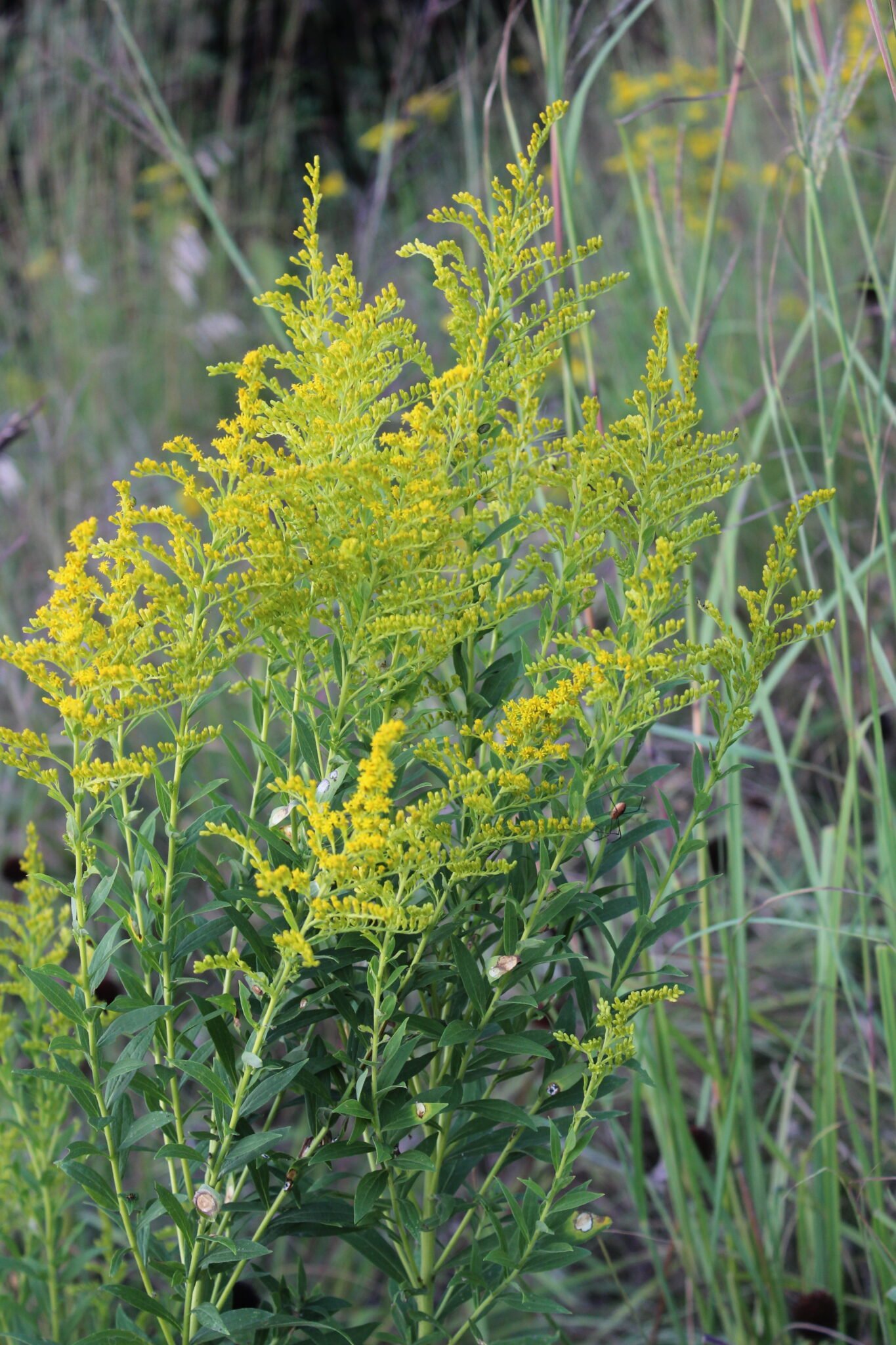
Goldenrod is the plant that gets blamed for the runny nose, scratchy throat, and congestion caused during the ragweed pollen season. Our bodies (our immune system) react to the allergens from ragweed by producing and sending histamine through our bloodstream.

There are different types of goldenrod. Above is a picture of the goldenrod that grows around me. The one pictured below was grown from seed in a naturalized field near me. It doesn't naturally grow in my area but still has a very yellow flower that blooms at the same time as ragweed.

Where does ragweed grow?
It does grow in most areas of the United States and Canada.
Specifically, I looked for areas with recently disturbed soil when I was looking to update my ragweed pictures. I headed toward a local retail construction site, and finding some great specimens only took a few minutes.

The above was just a mound of dirt near a construction site, and there were plenty of ragweed plants!
The image below is a young ragweed that doesn't yet have large flower spikes. I included the image so you can get a good look at the leaves of the plant. This plant really grows in what would be inhospitable to many plants.
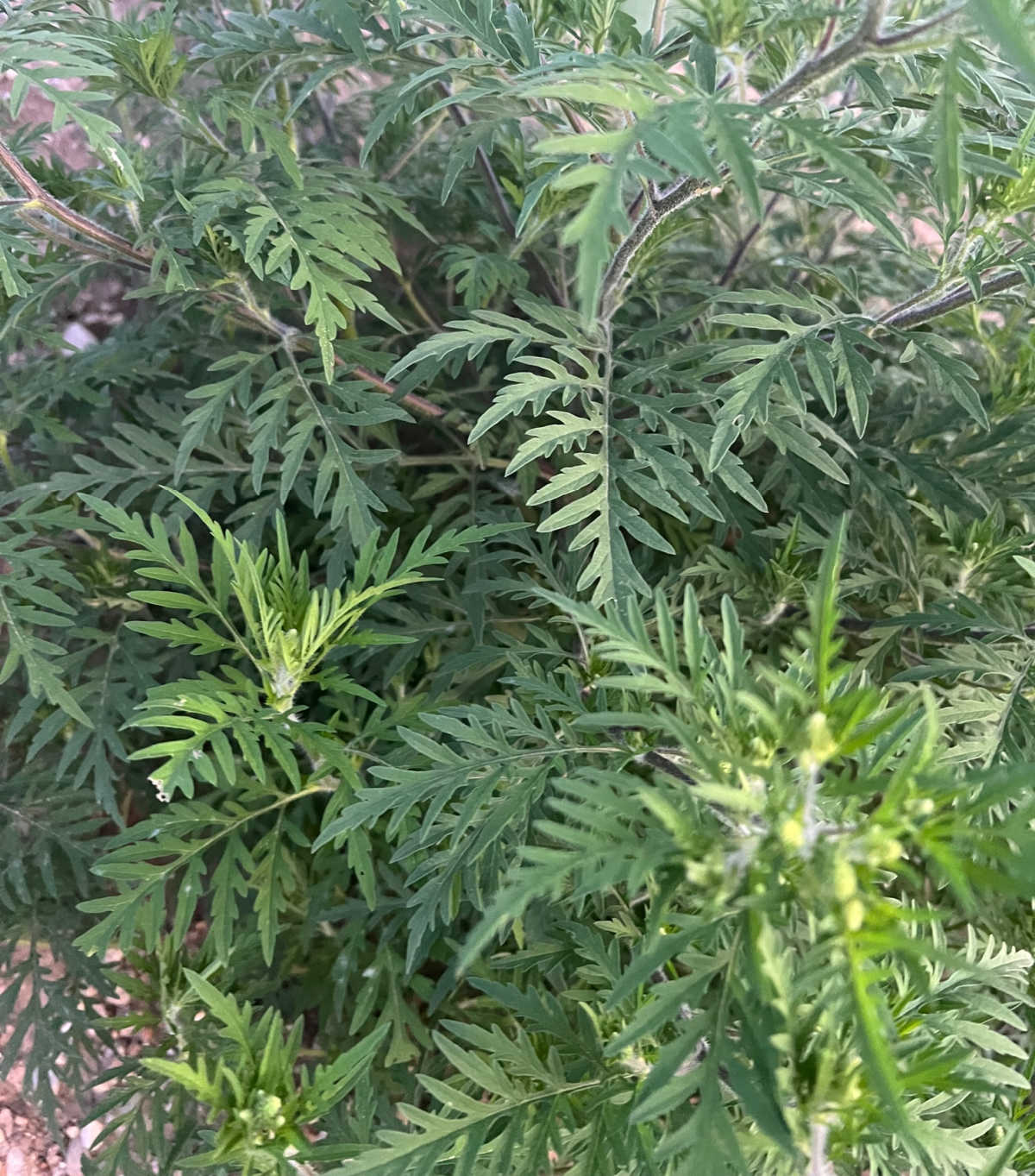
The picture of the ragweed below is in an abandoned parking lot of a closed-box store. Amazingly, they pop up and thrive in pavement and even concrete cracks. Part of the reason so many people suffer from a ragweed pollen allergy is the fact that this weed grows easily, even in urban areas.
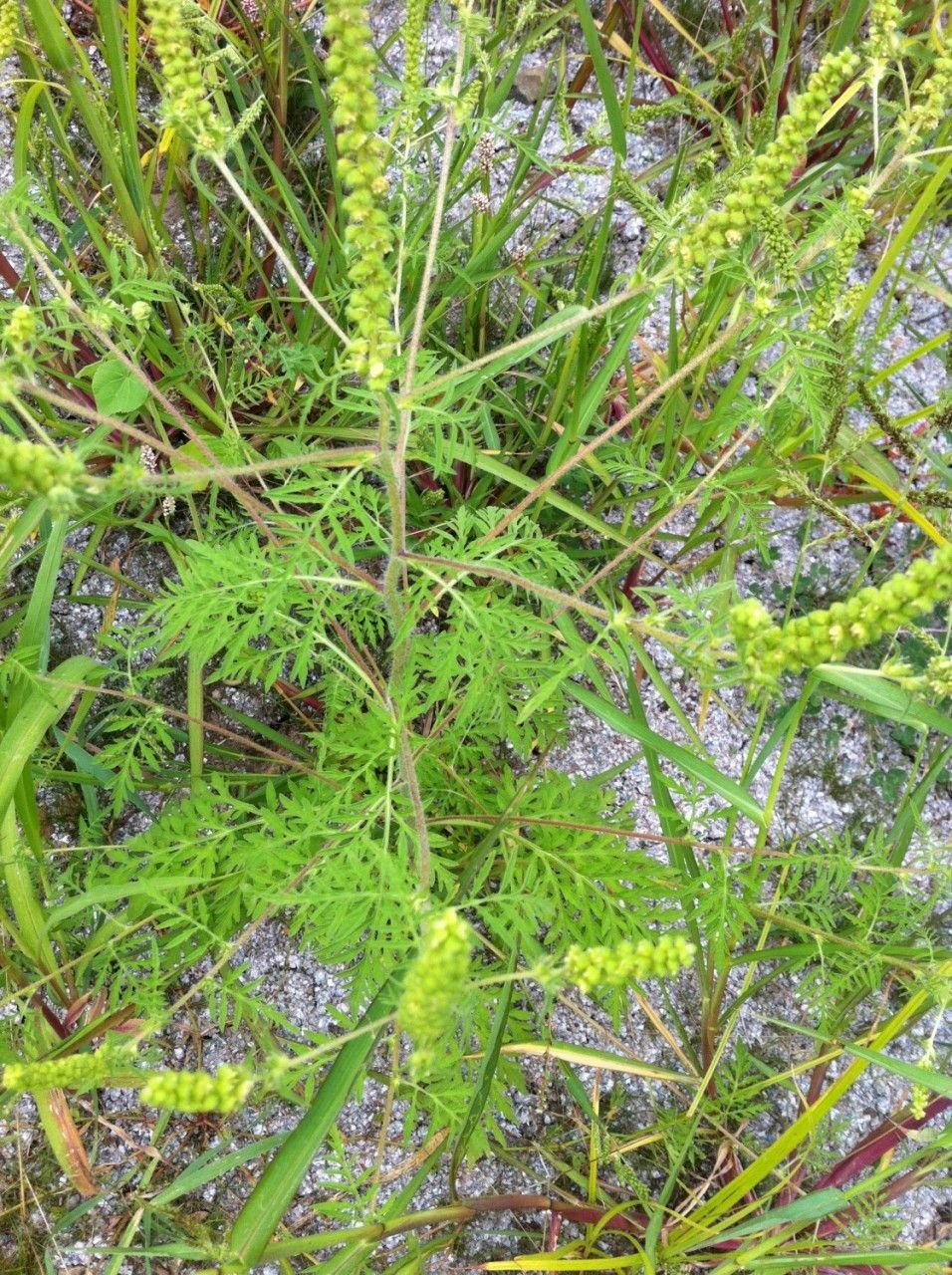
I was researching ragweed and thought it interesting that there are male and female flowers. Honestly, taking pictures is as close as I want to get to this plant. Like many people, I suffer from allergies and must start antihistamines early in the season.
Quick summary of how to tell the plants apart
Common Ragweed leaves are below.

Below are the giant ragweed leaves. They are quite different.

What color is ragweed pollen?
I have received quite a few people asking. The ragweed flower is green. The pollen is yellow.
A quick reminder! The goldenrod flower is yellow/golden and not green. It is NOT ragweed. The pictures below will help you identify goldenrod. Look at those leaves, too.
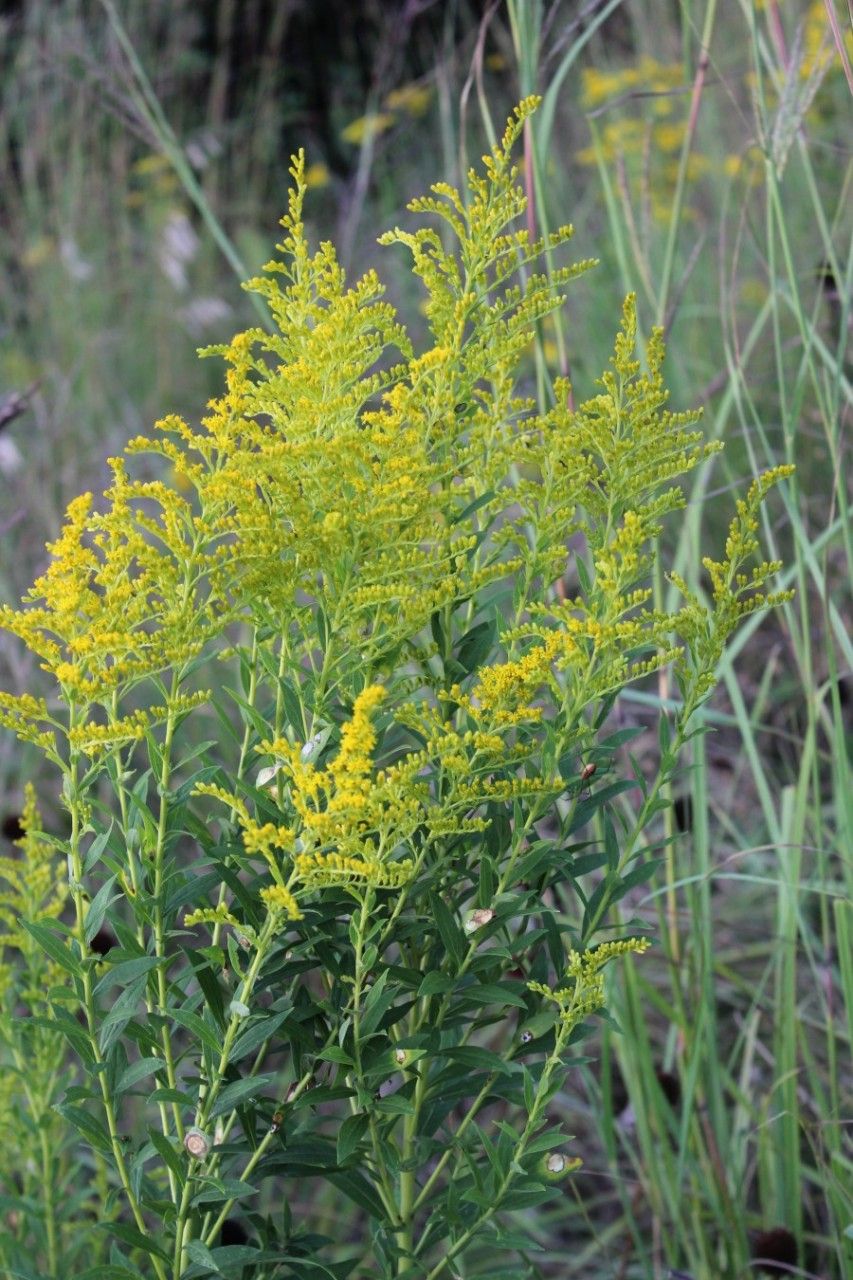
Hopefully, I've shown you the differences between goldenrod and two types of ragweed! Remember that both plants have different varieties, but my pictures should be a good guide. Remember, look at the leaves. That should be your best indication that the plant is ragweed and which kind of ragweed. And remember, the flower of ragweed is that boring green spike, not a pretty yellow!
FAQs
It generally starts in late summer in August and often ends in October. It all depends on the weather!
Prevention is the best method to control ragweed in your yard. If you see it, pull it before it flowers and spreads its pollen.
Symptoms include runny nose, itchy, watery eyes, headaches, sinus congestion, and sneezing.
**Below are some of the original ragweed pictures and commentary from when I originally wrote this post in 2014. I have found some folks like me to keep the original pictures and information during updates.
The first two pictures are of ragweed growing in really bright, sunny conditions (on the side of the road, between the road and the sidewalk.

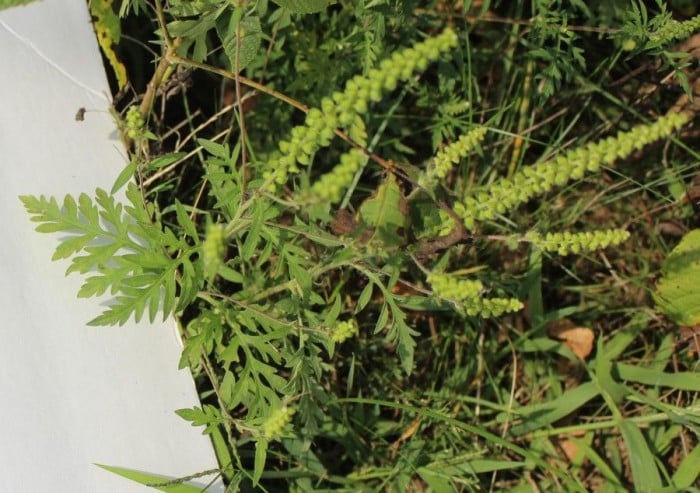
The next picture is a ragweed plant that I found in shadier conditions.
I hope these pictures of ragweed help you identify this weed that everyone is allergic to. Let's stop blaming the poor goldenrod plant for our allergy ailments!
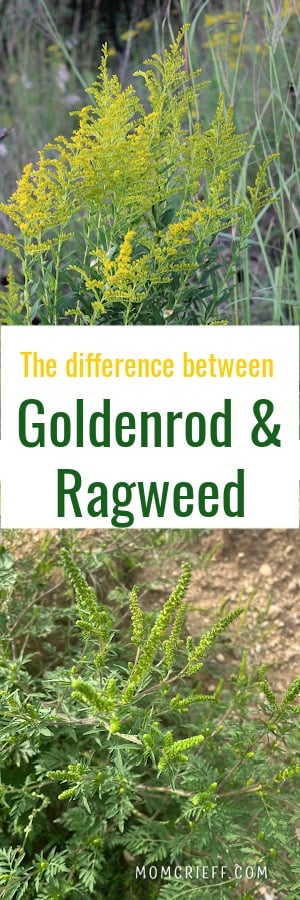
Be aware of the types of ragweed that grow around you. Along with common ragweed, there are also giant ragweed and western ragweed in large parts of the country.
Originally published October 2014.



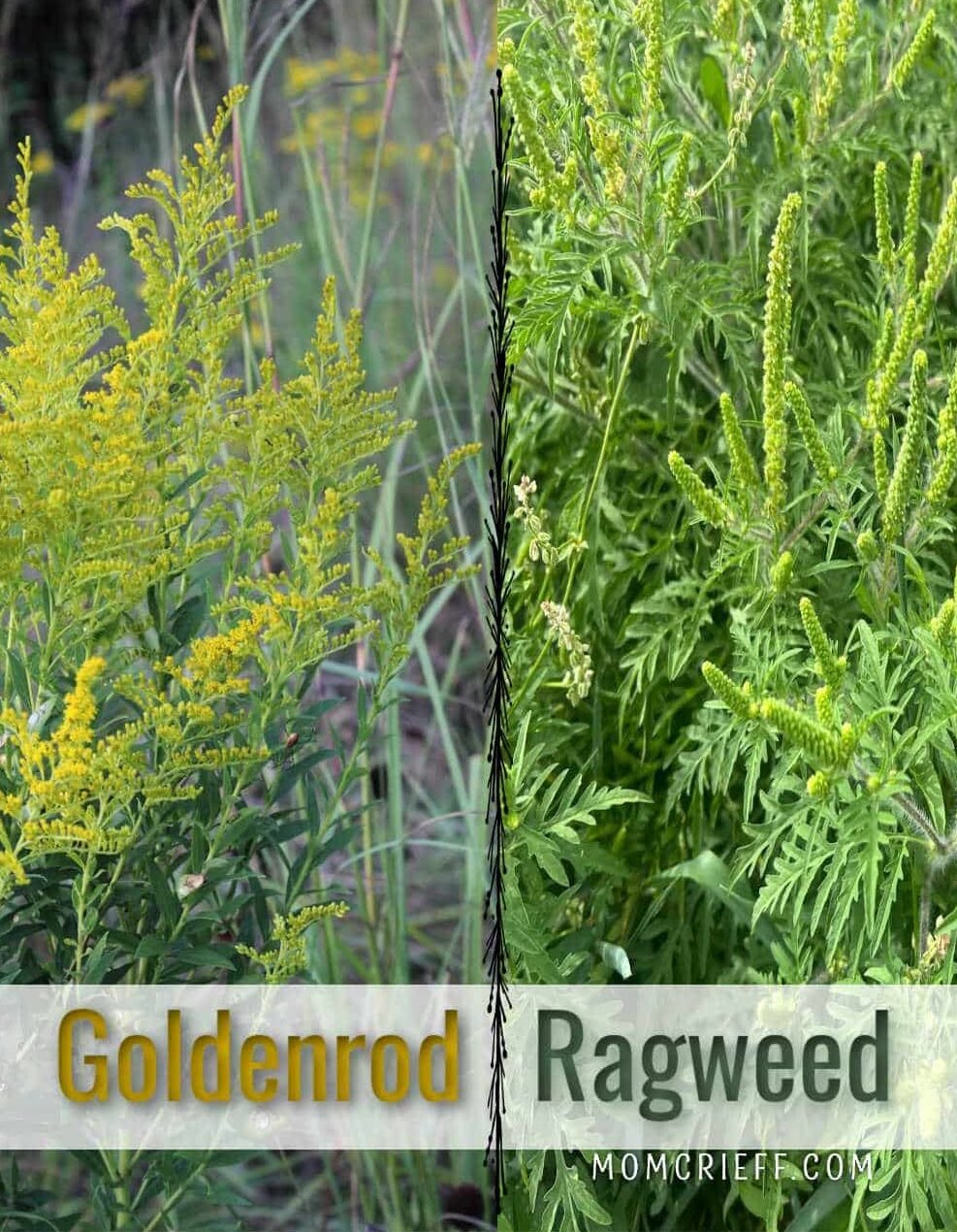
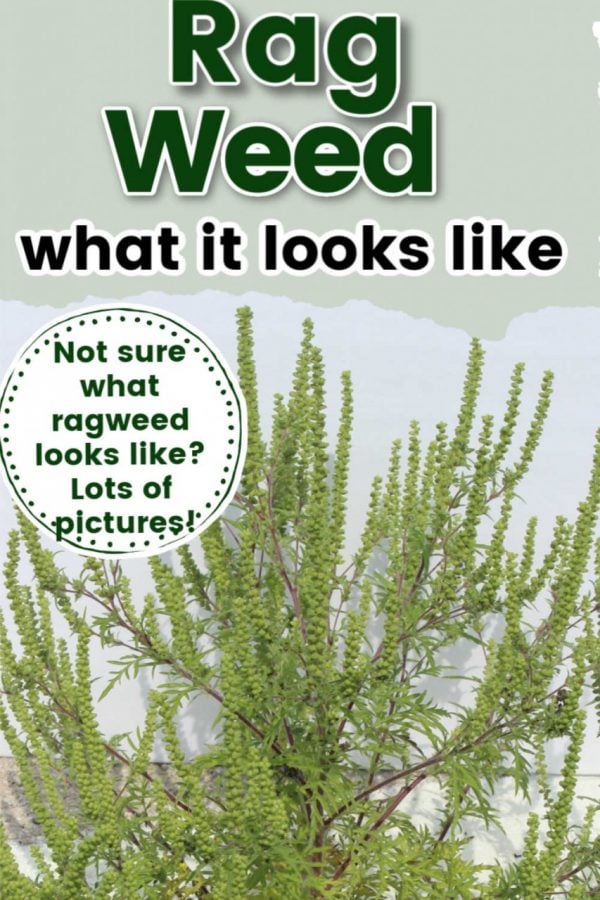
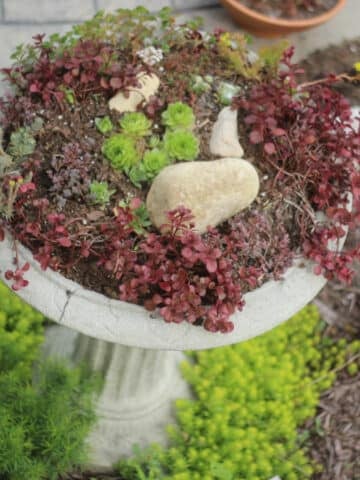
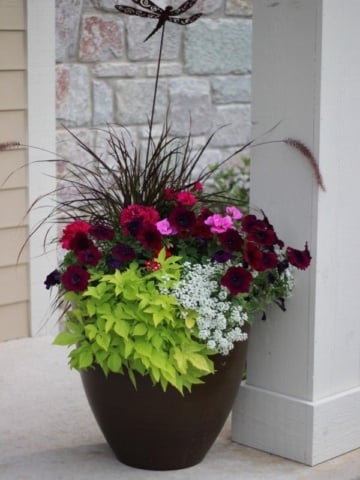

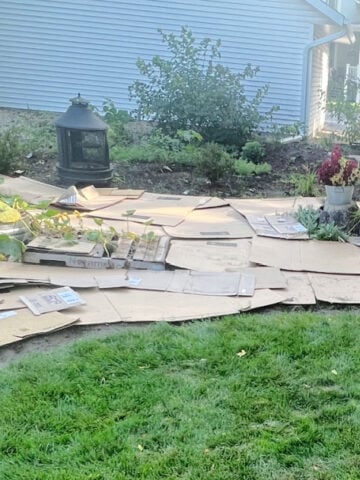
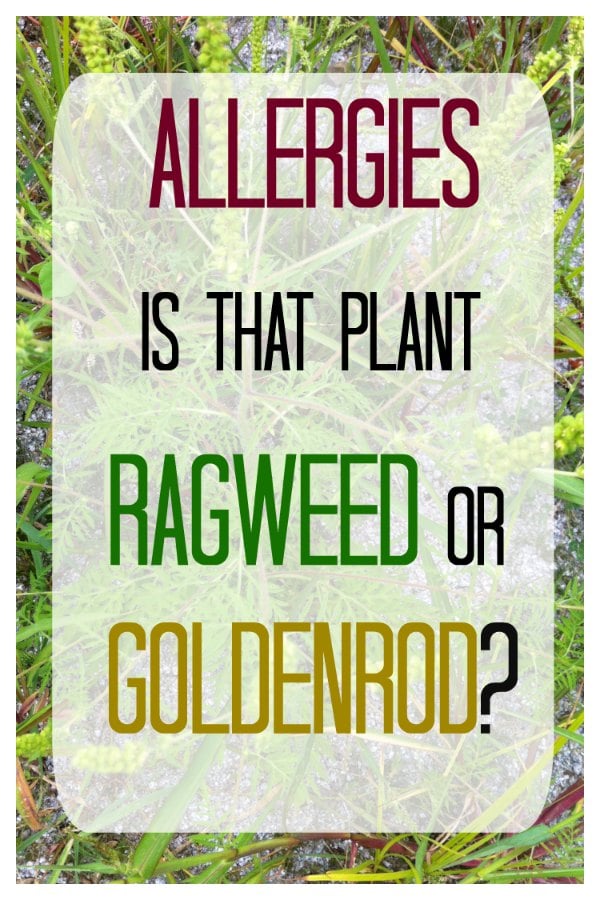
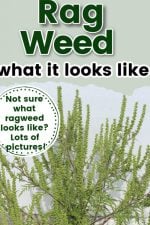
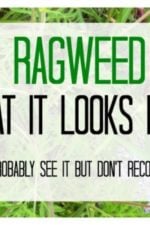
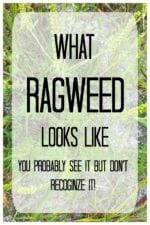
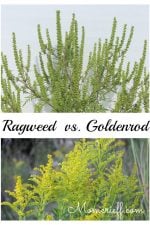
Anonymous
Once you realize that the ragweed is green and does not have a pretty 'flower', you will see it everywhere. in cracks, waste places. It is a plant that goes to any disturbed earth. And it is NOT yellow. At best when the 'flower' is mature it is a very neutral pale green
Catherine Conrady
Thank you for your excellent description of the two plants. I just had an argument with some friends about this and wanted to see if I identified the 2 correctly and it is so. I have quite an eye identifying the unwanted plants in my yard. I sow wild cosmos in my garden in the spring and when they sprout so does the ragweed and it is quite a challenge distinguishing between the two because the leaves look very much alike. Only when they get taller is it easier to see the difference. So I have learned to recognize it very early. I love goldenrod and let it grow freely but I pull the ragweed.
imarancher
Monarchs love ragweed. The local teacher takes some of my seeds to plant for her school children to raise a monarch garden. The kids love it. So do I. I have a fenced off plot near my back door that is allowed to grow weeds that collect butterflys as well as the bright red and pink and flourescent white 4 o'clocks that attract pyramid moths. I have to tell you that what the teacher, the monarch and I call ragweed doesn't look like this. Our ragweed has darker yellow brown centers and white petals. I was actually surprised that butterflys would go for something that was not too colorful. But they love them. I've never seen goldenrod around here but it is farm country and except for my ersatz ragweed, we do not encourage weeds in our pastures or yards.
DJDell
Although homeopathic medicine has not been common-place in America for a while (slowly making a comeback, as are wild edibles) I come from a long line of homeopathic doctors and have come to learn and appreciate a lot about the so-called "weeds" around us, most of which are edible, natural medicine, far more nutricious than what you buy in the grocery story. In fact, after dumping the tea at the Boston Tea party colonists turned to goldenrod tea, and it was so popular and valuable they ended up additionally profiting from its demand by creating trade arrangements with Asia. Ambrosia means "food of the gods" and from ancient times was one of the highest prized foods and medicines - this is ragweed. The native Americans cultivated it. I consume both plants regularly and welcome them in my yard, among many others. Only in recent times have pollen allergies become more prevalent, likely both due to weakened immune systems and toxic elements in our environment that erode the covering that encloses the pollen allowing more to escape. But the leaf of the ragweed plant is entirely different from the pollen, and eating or making into a tea the leaf has been well known in natural circles for hundreds of years to halt the allergic reaction to the pollen. This is what homeopathy is all about - like cures like - sort of like vaccines but natural and healthier. Of course, I personally would not take herbs combined with any pharmaceutical/synthetic medications not knowing how they would interact, but since I only use plants as medicine that's not an issue for me. I hope something here helps those suffering who have not found an effective treatment, and please research "wild edibles" and "plants as medicine." Most plants including what we have deemed "weeds" are very valuable. For example, purslane which is a common small viney succulent that creeps along many garden bottoms tastes delicious and will give you all the Omega-3 / Omega-6 good oils you need, lambsquarters are a very common easy-to-identify weed with a white tuft of minerals on top and they taste just like spinach but are twice as nutritious, and there are many more examples. This is high quality, effective, free natural medicine and food. The only reason we have pharmaceutical medications that are perversions of nature concocted in a lab with dangerous side effects is because nature isn't patentable - corporations have to alter is to make it patentable and thus profitable, and profit comes before your health.
momcrieff
Hi DJDell! I appreciate your comments. You are obviously passionate about what you say. Can you please e-mail me at susan@momcrieff.com so we can discuss this some more.
Alice Ayers
I am a sixty-year gardener and had to look at your post to see what is growing (and well) in my pollinator garden. Thanks for the definitive pics - now I know what to pull up!
momcrieff
Glad I could help! It amazed me how hard it was to find someone to help me identify ragweed. Poor goldenrod seems to always get the blame.
alane lambert
I feel so bad, as I have always blamed the autumn sniffles on goldenrod. The reason I checked it out finally, after all these years was the weather man said this would be a very long ragweed season. Thank you so much for your diligent work. I can officially say that I have ragweed to blame.
Carol Payne
I could have told you what ragweed looks like although I've never seen it blooming. I try to pull it up when it's small. My ex is very smart about trees and weeds. He knows every tree by looking at the wood and we gardened. My knowledge is from him!!! I mostly identify from leaves.
sbgypsy
I saw some goldenrod in a bouquet of mixed flowers, and thinking they were ragweed, I decided to inhale and find out if my sinus problems were due to allergies. I buried my face in the goldenrod, took a deep breath through my nose, and my sinuses instantly became so inflamed that I could not breathe for hours. Goldenrod may not be ragweed, but it is definitely the cause of my sinus headaches in this season.
LMA
Hi, direct contact with goldenrod could cause a skin reaction, but the pollen is not carried by the wind, as with ragweed.
anyuta
Great post. What about allergy shots for all of those of you who are suffering? I've been doing it for 17 mos. (just got to maintenance does about 6 weeks ago). The allergies are nowhere near gone but not nearly as bad as when they started a few years ago. Also read that several researchers (in Canada and Australia) are working on ragweed vaccines -- so let's pray for this as an end to our misery!!
lise
Lori, you have to tell by taking you or or children to an allergist, he will do small scratches on your skin, be it on your back or arms. ... and then they will read it...if it becomes very itchy or your skin areas swell, depending on the serum they injected you with, they will be able to tell. Also, the Month of Sept is Golderod season!
Jade
This article and pics is awesome!!! Just an hour or so ago I went out to help my husband with something and I had to walk close to and apparently touch our totally out of control jungle of a yard ... Was only out there a few minutes but came in and noticed my legs itching and looking down at them saw them covered in red itchy splotches... All over! I thought I couldn't have been attacked by bugs that bad that fast and not noticed... I Alsop didn't think there was any poison ivy near...so I was baffled at all these itchy bumbs..now welts. So I searched "itchy plants" and ended up with several that you showed...but once I saw your pics I looked outside and went "yes!!! That's it!!!!" And probably why my allergies have been so bad! Thanks so much!!! 🙂
momcrieff
Poor goldenrod is too often blamed for allergies. Glad to have helped you!
Diana
Thank you so much, Susan. The second pic of the ragweed is a beautiful picture. No doubt about what that is! I have a weird thing growing outside my kitchen window. The only one of many little plants at the time, that seemed vigorous and cute. It is now bigger than I am and twice as round. It looks like a tree, but in the last two weeks is showing definite fake goldenrod tendencies. And it is covered with blooms and tiny little 1/2 inch leaves! Now that I know what it isn't, I am dying to know what it is. The 'trunk' is like 2 1/2" thick, like a giant sun flower. Don't want to chop it down 'til I find out what it is! Anybody got any ideas? Thanks again!
Kelley
Best and most concise photos to be found! Thanks.
momcrieff
Thank you for the nice comment! It was surprisingly hard for me to find someone to help me identify ragweed! I bet most people can't!
Kellie
TBH I wish ALL of the allergy enducing weeds would be eradicated!!! I have year round allergies and am so sick and tired (literally) of dealing with it. I take Benadryl almost every day and it stinks!!! #NoFair
momcrieff
I hate allergies too! Benadryl makes me super drowsy. There are better allergy meds. that are over the counter. Talk to your pharmacist. They can help you find something better.
Tom
Glad you clarified the mixed up pick on the Net. I found the same thing. So many photo of Goldenrod and calling ragweed. Goldenrod is actually a cure for allergies in tincture form. Its pollen is to large to be carried like ragweed. It's not a problem plant like ragweed.
Richard Vardaman
Very informative post, Thanks!
momcrieff
Happy to help!
Anonymous
Thanks for this. Constantly confused.
momcrieff
You're welcome. I think so many of us blame the poor ragweed!
Linda
I'm a novice wildflower gardener. Am cultivating goldenrod and purple aster. The close up pic of the goldenrod leaf you posted looks like purple aster to me -- leaf bases fold around the stem. ???
Lori van
But the real question is, are you allergic to ragweed or goldenrod and how do you know? Alex and Emma are also suffering lately.
momcrieff
From what I've read, the vast majority are allergic to ragweed. The pollen of ragweed is small, light and spreads by being wind blown. Goldenrod on the other hand has pollen that is big, heavy and sticky. It is spread by insects and normally doesn't float in the air. Goldenrod gets blamed for people's allergies because it blooms at the same time as ragweed and is what we see. I guess the only way to be sure is a real allergy test. But, in my mind the logic behind ragweed being the guilty one is sound.